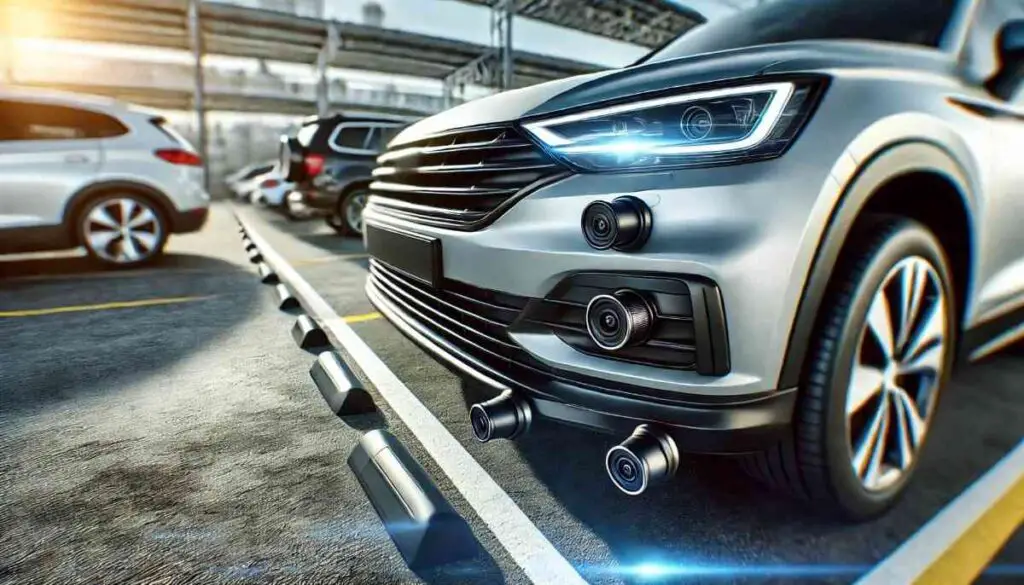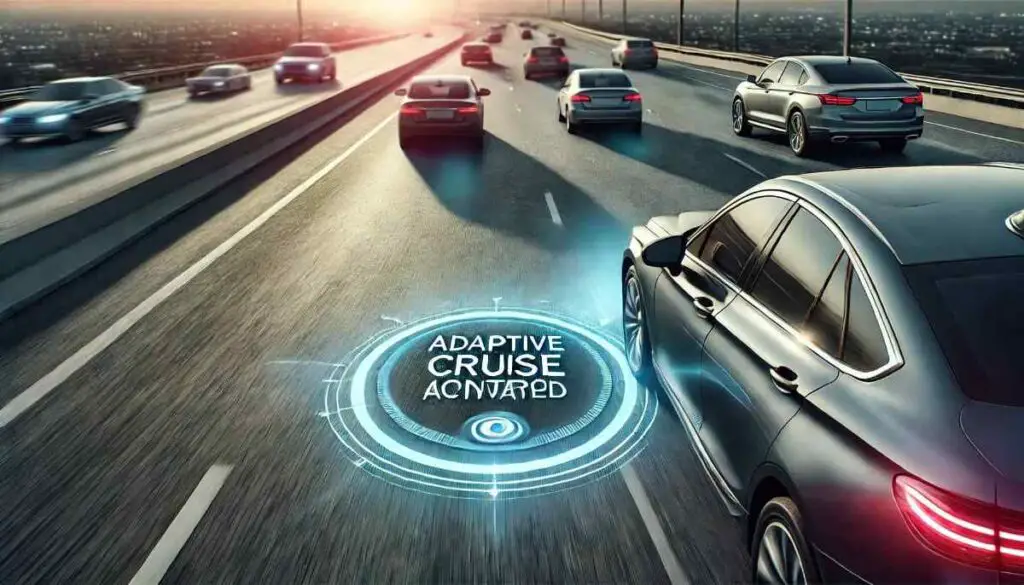Euro NCAP, an acronym for the European New Car Assessment Programme, holds paramount significance in the automotive realm as the benchmark for vehicle safety assessment. It plays a pivotal role in guiding consumers towards informed purchasing decisions by scrutinizing vehicles’ safety features through rigorous testing procedures.
Origins and Evolution
- Collaborative Efforts in the 1990s: Euro NCAP’s roots can be traced back to the 1990s when it emerged from the collective efforts of European governments, motoring clubs, and consumer organizations. This collaboration aimed to address the lack of standardized safety assessments for new vehicles entering the market.
- Establishment of Euro NCAP: Recognizing the need for a standardized safety assessment program, Euro NCAP was established as an independent organization dedicated to evaluating the safety performance of new vehicles. Its primary objective was to provide consumers with transparent and reliable information about vehicle safety features.
- Empowering Consumers: Euro NCAP’s mission from the outset was to empower consumers to make informed decisions when purchasing vehicles. By providing comprehensive safety ratings and assessments, Euro NCAP aimed to guide consumers towards safer vehicle choices.
- Evolution Over Time: Since its inception, Euro NCAP has evolved significantly, adapting its protocols and methodologies to reflect advancements in automotive safety technology. This evolution has been crucial in ensuring that Euro NCAP’s assessments remain relevant and reflective of real-world safety scenarios.
- Adaptation to Advancements: As new safety features and innovations have been introduced in the automotive industry, Euro NCAP has continually adapted its testing protocols and evaluation criteria. This iterative approach has allowed Euro NCAP to maintain its position as a trusted authority in vehicle safety assessment.
- Commitment to Transparency: Euro NCAP operates independently of any commercial interests or affiliations with manufacturers. This commitment to transparency and impartiality ensures that the assessment process is fair and unbiased, providing consumers with confidence in Euro NCAP’s safety ratings.
- Recognition and Respect: Euro NCAP’s dedication to safety assessment has earned it recognition and respect from both manufacturers and consumers. Its rigorous testing procedures and impartial evaluations have made Euro NCAP a trusted source of information in the automotive industry.
- Continued Impact: Euro NCAP continues to play a crucial role in promoting safer vehicles and driving innovation in automotive safety technology. Its assessments influence manufacturers’ design decisions and empower consumers to prioritize safety when purchasing vehicles.
Testing Protocols
Euro NCAP employs meticulous testing procedures to comprehensively evaluate vehicle safety. This includes conducting crash test simulations under controlled conditions, providing invaluable insights into a vehicle’s crashworthiness and occupant protection capabilities.
- Meticulous Testing Procedures: Euro NCAP employs meticulous testing procedures to comprehensively evaluate vehicle safety. These procedures are designed to provide thorough assessments of a vehicle’s safety features and capabilities.
- Crash Test Simulations: One of the primary methods used by Euro NCAP is conducting crash test simulations under controlled conditions. These simulations involve subjecting vehicles to various types of crashes, including frontal, side, and rear impacts, to assess their crashworthiness.
- Controlled Conditions: Crash test simulations are conducted under carefully controlled conditions to ensure consistency and accuracy in the results. Factors such as speed, angle of impact, and vehicle positioning are carefully controlled to replicate real-world crash scenarios as closely as possible.
- Insights into Crashworthiness: By subjecting vehicles to crash test simulations, Euro NCAP gains invaluable insights into their crashworthiness. This includes assessing factors such as structural integrity, deformation patterns, and the effectiveness of safety restraint systems.
- Occupant Protection: In addition to evaluating a vehicle’s crashworthiness, Euro NCAP’s testing procedures also assess its occupant protection capabilities. This involves analyzing factors such as seatbelt effectiveness, airbag deployment, and the likelihood of injury to occupants in the event of a crash.
- Comprehensive Evaluation: Euro NCAP’s testing procedures aim to provide a comprehensive evaluation of a vehicle’s safety performance. By conducting a range of crash test simulations and analyzing various safety parameters, Euro NCAP is able to provide consumers with detailed insights into the safety of different vehicle models.
Evaluation Criteria
The assessment criteria of Euro NCAP are multifaceted, encompassing aspects such as occupant protection, pedestrian safety, and the effectiveness of safety assist technologies. These criteria serve as pillars for determining a vehicle’s overall safety rating.
- Multifaceted Assessment Criteria: Euro NCAP utilizes multifaceted assessment criteria to evaluate vehicle safety comprehensively. These criteria encompass various aspects of safety, ensuring a thorough evaluation of a vehicle’s overall safety performance.
- Occupant Protection: One key aspect of Euro NCAP’s evaluation criteria is occupant protection. This involves assessing the vehicle’s ability to protect occupants in the event of a crash, including factors such as structural integrity, seatbelt effectiveness, and airbag deployment.
- Pedestrian Safety: Euro NCAP also considers pedestrian safety as a crucial aspect of vehicle safety. This includes evaluating the vehicle’s design features and safety measures aimed at reducing the risk of injury to pedestrians in the event of a collision.
- Safety Assist Technologies: Another important criterion assessed by Euro NCAP is the effectiveness of safety assist technologies. This includes features such as autonomous emergency braking, lane-keeping assist, and adaptive cruise control, which are designed to enhance the safety of both occupants and other road users.
- Pillars for Safety Ratings: These evaluation criteria serve as pillars for determining a vehicle’s overall safety rating. By considering multiple aspects of safety, Euro NCAP is able to provide consumers with a comprehensive assessment of a vehicle’s safety performance.
- Comprehensive Evaluation: Euro NCAP’s multifaceted evaluation criteria ensure that all aspects of vehicle safety are thoroughly assessed. This comprehensive evaluation enables consumers to make informed decisions when choosing a vehicle, prioritizing safety features that align with their needs and preferences.
Read More : Electric Cars With Longest Range
Deciphering Star Ratings
Euro NCAP utilizes a star rating system to communicate a vehicle’s safety performance to consumers. Higher star ratings denote superior safety standards, offering consumers a clear benchmark for comparing different models.
Influence on Vehicle Design
The ratings awarded by Euro NCAP significantly influence vehicle design and manufacturing processes. Manufacturers strive to integrate advanced safety features to meet Euro NCAP standards, thus enhancing overall vehicle safety.
Empowering Consumers
Euro NCAP plays a crucial role in empowering consumers by providing transparent safety information. Through its ratings, consumers can make informed decisions, prioritizing safety in their vehicle purchases.
- Crucial Role in Empowerment: Euro NCAP plays a crucial role in empowering consumers by providing transparent safety information about vehicles. Through its comprehensive safety assessments and ratings, Euro NCAP enables consumers to make informed decisions when purchasing vehicles.
- Transparent Safety Information: Euro NCAP is committed to transparency in its safety assessments. By conducting thorough testing procedures and evaluations, Euro NCAP provides consumers with detailed insights into the safety performance of different vehicle models.
- Informed Decision-Making: The ratings and safety information provided by Euro NCAP allow consumers to make informed decisions about which vehicles to purchase. By prioritizing safety in their purchasing criteria, consumers can choose vehicles that offer the highest levels of protection for themselves and their families.
- Consumer Confidence: Euro NCAP’s role in providing transparent safety information builds consumer confidence in the automotive market. Consumers trust Euro NCAP ratings as a reliable indicator of a vehicle’s safety performance, leading to increased demand for vehicles with higher safety ratings.
- Encouraging Safety Prioritization: Euro NCAP’s emphasis on safety through its ratings encourages manufacturers to prioritize safety in their vehicle designs. Knowing that consumers value safety, manufacturers invest in developing and implementing advanced safety technologies to improve their Euro NCAP ratings.
- Educational Resource: Euro NCAP serves as an educational resource for consumers, providing them with valuable information about the safety features and capabilities of different vehicles. Consumers can access Euro NCAP’s website and databases to research safety ratings before making purchasing decisions.
- Promoting Market Competition: Euro NCAP’s transparent safety assessments create a competitive environment in the automotive market. Manufacturers strive to achieve higher safety ratings than their competitors, driving innovation and improvement in vehicle safety standards overall.
In essence, Euro NCAP’s provision of transparent safety information empowers consumers to prioritize safety in their vehicle purchases, ultimately contributing to improved road safety and consumer welfare.
Read More : Need for Transportation Assistance
Global Recognition
Euro NCAP’s standards enjoy global recognition, influencing manufacturers worldwide. Its adoption by manufacturers underscores its significance in shaping global vehicle safety standards.
- Global Recognition: Euro NCAP’s standards are globally recognized and respected within the automotive industry. Its rigorous testing protocols and comprehensive safety assessments have earned Euro NCAP a reputation as a leading authority on vehicle safety.
- Influence on Manufacturers Worldwide: Euro NCAP’s standards have a significant influence on manufacturers worldwide. The adoption of Euro NCAP’s safety standards by manufacturers underscores its importance in shaping global vehicle safety standards.
- Benchmark for Safety: Euro NCAP’s safety ratings serve as a benchmark for safety standards in the automotive industry. Manufacturers strive to meet or exceed Euro NCAP’s standards to demonstrate their commitment to producing safe vehicles.
- Consumer Confidence: Consumers around the world place trust in Euro NCAP’s safety ratings when making purchasing decisions. The global recognition of Euro NCAP’s standards provides consumers with confidence that vehicles meeting these standards offer high levels of safety.
- Regulatory Consideration: Euro NCAP’s standards may also influence regulatory bodies and government agencies worldwide. Policymakers often take Euro NCAP ratings into account when formulating vehicle safety regulations, further solidifying its influence on global vehicle safety standards.
- Encouraging Innovation: Euro NCAP’s stringent testing protocols and evolving assessment criteria encourage innovation in vehicle safety technology. Manufacturers are motivated to invest in research and development to meet the latest Euro NCAP standards and achieve higher safety ratings.
- Collaboration with International Partners: Euro NCAP collaborates with international partners and organizations to promote vehicle safety globally. Through initiatives such as the Global NCAP, Euro NCAP works to raise awareness of vehicle safety issues and advocate for improved safety standards worldwide.
Overall, Euro NCAP’s global recognition and influence on manufacturers underscore its significance in shaping global vehicle safety standards and promoting safer vehicles for consumers worldwide.
Future Trends
As automotive technology continues to advance, Euro NCAP remains committed to adapting its assessment methodologies. It plays a crucial role in driving innovation and shaping the future of vehicle safety.
- Adapting to Advancing Technology: Euro NCAP remains committed to adapting its assessment methodologies in response to advancements in automotive technology. As new safety features and innovations emerge, Euro NCAP continually updates its testing protocols and evaluation criteria to ensure that they remain relevant and reflective of real-world safety scenarios.
- Continuous Improvement: Euro NCAP’s commitment to adapting its assessment methodologies reflects its dedication to continuous improvement in vehicle safety standards. By staying abreast of technological advancements, Euro NCAP can provide consumers with up-to-date information about the safety performance of the latest vehicle models.
- Driving Innovation: Euro NCAP plays a crucial role in driving innovation in the automotive industry by setting high safety standards and challenging manufacturers to meet or exceed them. Manufacturers are incentivized to invest in research and development to incorporate new safety technologies into their vehicles to achieve favorable Euro NCAP ratings.
- Encouraging Safety Prioritization: Euro NCAP’s emphasis on vehicle safety encourages manufacturers to prioritize safety in their design and engineering processes. As Euro NCAP standards evolve to encompass new safety technologies and features, manufacturers are motivated to integrate these innovations into their vehicles to improve their safety ratings.
- Shaping the Future of Vehicle Safety: Euro NCAP’s role in adapting its assessment methodologies and driving innovation in vehicle safety positions it as a key player in shaping the future of vehicle safety. By setting high standards and pushing the boundaries of safety technology, Euro NCAP contributes to the development of safer vehicles and ultimately helps save lives on the road.
In summary, Euro NCAP’s commitment to adapting its assessment methodologies and driving innovation in vehicle safety underscores its crucial role in shaping the future of vehicle safety. By staying ahead of technological advancements and challenging manufacturers to prioritize safety, Euro NCAP plays a pivotal role in promoting safer vehicles for consumers.
FAQs
- What is Euro NCAP, and why is it important?
- Euro NCAP is a crucial vehicle safety assessment program that guides consumers towards making safer vehicle choices. It conducts comprehensive safety tests and provides ratings for various vehicle models, helping consumers prioritize safety when purchasing a car.
- How are Euro NCAP ratings determined?
- Euro NCAP ratings are determined through comprehensive testing procedures that evaluate various safety aspects of vehicles. These tests include crash tests, assessments of safety assist technologies, and evaluations of occupant and pedestrian protection measures.
- Do higher star ratings guarantee absolute safety?
- While higher Euro NCAP star ratings indicate superior safety performance, they do not guarantee absolute safety in all scenarios. It’s essential for consumers to consider other factors, such as driving conditions and individual driving behavior, in addition to Euro NCAP ratings.
- Are Euro NCAP ratings applicable globally?
- Yes, Euro NCAP ratings have global relevance and influence on vehicle safety standards. Many manufacturers worldwide aim to achieve high Euro NCAP ratings for their vehicles, as these ratings are recognized internationally and can impact consumer purchasing decisions globally.
- How frequently are Euro NCAP testing protocols updated?
- Euro NCAP testing protocols are regularly updated to reflect advancements in automotive safety technology. This ensures that Euro NCAP’s assessments remain relevant and aligned with the latest safety innovations and standards in the automotive industry.
- Can vehicles with lower ratings still be considered safe?
- Vehicles with lower Euro NCAP ratings may still offer adequate safety but may not provide the same level of protection as higher-rated models. It’s essential for consumers to carefully consider their individual safety needs and preferences when interpreting Euro NCAP ratings.
- Are there any limitations to Euro NCAP assessments?
- Euro NCAP assessments primarily focus on crashworthiness and may not encompass all potential real-world scenarios. While Euro NCAP tests provide valuable insights into a vehicle’s safety performance, they may not cover every possible safety aspect or scenario encountered on the road.
- How do Euro NCAP ratings influence insurance premiums?
- Higher-rated vehicles by Euro NCAP may attract lower insurance premiums due to their superior safety standards. Insurance companies often consider vehicle safety ratings when determining insurance premiums, as safer vehicles are generally associated with lower risks of accidents and injuries.
- What should consumers look for when interpreting Euro NCAP ratings?
- Consumers should focus on aspects such as occupant protection, pedestrian safety, and the effectiveness of safety assist technologies when interpreting Euro NCAP ratings. These factors provide valuable insights into a vehicle’s overall safety performance.
- How does Euro NCAP contribute to overall road safety?
- Euro NCAP’s efforts in promoting safer vehicle designs contribute significantly to reducing road accidents and fatalities. By setting high safety standards and encouraging manufacturers to prioritize safety, Euro NCAP plays a crucial role in improving road safety for all road users.
Conclusion
In conclusion, Euro NCAP stands as a beacon of safety assessment in the automotive industry, guiding consumers towards safer vehicle choices. Its influence extends globally, shaping the landscape of vehicle safety standards and fostering innovation. Embracing transparency and consumer empowerment, Euro NCAP paves the way for a future where road safety remains paramount.







